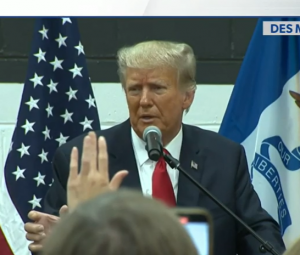Saturday’s verdict isn’t just the one step in electing an American president. According to an Associated Press report, there is still months-long timeline before Joe Biden takes the oath as the 46th President of the United States.
Here are the next steps before US gets its new president:
When US citizens vote in a presidential candidate, they really are voting for electors in their state. The electors, in most cases, are committed to support the voters’ candidate of choice.
After the Election Day, each state counts and certify the results. When the counting is completed, governor is required to prepare “as soon as practicable” documents known as “Certificates of Ascertainment” of the vote. Electors’ names and the number of votes cast for the winner and loser are listed on the certificates and it carries the seal of each state. The certificate is sent to the archivist of the United States.
Also Read| After losing his re-election bid, what’s next for Donald Trump?
Any election disputes should be resolved by December 8 at the state level. All state recounts and court contests over presidential election results are to be completed by this date.
December 14: Electors cast their vote by paper ballot in their respective states and the District of Columbia. According to the Congressional Research Service, 33 states and DC have to vote the same way the popular vote goes in the state, and in some states, electors can even be replaced or subjected to penalties. After the votes for president and vice president are counted, the electors sign six ‘Certificates of the Vote’. The certificates, along with other official papers, are sent by registered mail to various officials, including the president of the Senate.
December 23: Designated officials should receive the certificates by this date. If they are not delivered, the law provides alternative avenues for getting the results to Washington.
January 6: In a joint session, the House and Senate count the electoral votes. If one ticket has received 270 or more electoral votes, the president of the Senate, currently Vice President Mike Pence, announces the results.
Members of Congress can object to returns as they are announced and objections must be made in writing by at least one member of the House and one in the Senate. If the objection meets certain requirements, each chamber meets separately to debate the objection for a maximum of two hours. Afterward, each chamber votes to accept or reject the objection. Back in joint session, the results of the respective votes are announced. Any objection to a state’s electoral vote has to be approved by both houses in order for any contested votes to be excluded.
If there is no clear mandate, the House decides the election, based on the 12th Amendment to the Constitution.
January 20: The president-elect is sworn into office.







